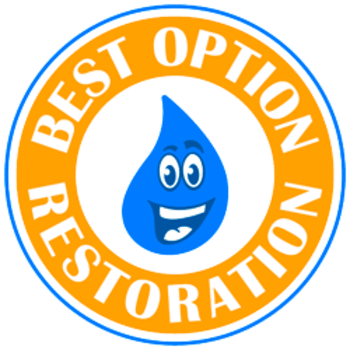
Flooded Basement? Best Option Restoration’s Top Recommendations
Understanding the Causes of Basement Flooding
- Extreme Weather Conditions: Heavy rainfall, melting snow, or hurricanes can lead to water seeping through foundation cracks.
- Plumbing Failures: Broken pipes, sump pump failures, or sewer backups can result in significant water intrusion.
- Foundation Issues: Cracks or improper sealing in the foundation can allow water to enter the basement.
Top Recommendations for Flooded Basement Recovery
1. Prioritize Safety First
- Electrical Hazards: Ensure the electricity is turned off before entering the flooded area to prevent the risk of electrical shock. If you cannot safely access the main power switch, contact a qualified electrician.
- Gas Leaks: If you smell gas or suspect a leak, turn off the main gas valve, open all windows, and leave the house immediately. Notify the gas company or emergency services and do not return until it's declared safe.
2. Identify and Stop the Water Source
- Locate the Source: Determine whether the flooding is due to external factors like heavy rain or internal issues such as plumbing failures.
- Mitigate Further Damage: If possible, seal foundation cracks or repair broken pipes to prevent additional water ingress.
3. Remove Standing Water Promptly
- Water Extraction: Use sump pumps, wet-dry vacuums, or professional water removal services to eliminate standing water. Ensure that the water is discharged at a safe distance from the home to prevent re-entry.
4. Thoroughly Dry the Area
- Dehumidification: Utilize industrial-grade dehumidifiers and fans to accelerate the drying process. The Environmental Protection Agency (EPA) recommends maintaining indoor humidity levels below 60% to inhibit mold growth.
- Ventilation: Open windows and doors to enhance air circulation, aiding in the drying process.
5. Clean and Disinfect Affected Areas
- Mold Prevention: Mold can develop within 24 to 48 hours in damp conditions. Remove and discard porous materials like carpets and drywall that cannot be thoroughly cleaned and dried.
- Sanitization: Clean salvageable items and surfaces with disinfectants approved by environmental health agencies to eliminate contaminants.
6. Repair and Implement Preventive Measures
- Structural Repairs: Address any structural damage to restore the integrity of your home.
- Preventive Actions: Seal foundation cracks, install or maintain sump pumps, and ensure proper grading around the home to direct water away from the foundation.
Insurance and Documentation
Expert Assistance
Collaborating with professional restoration services can provide the expertise and advanced equipment necessary for comprehensive recovery. Best Option Restoration offers 24/7 emergency services, ensuring prompt and efficient restoration to return your property to its pre-damage condition.
Conclusion
Addressing a flooded basement requires prompt action, strategic remediation efforts, and preventive measures to avoid future incidents. By following these top recommendations from Best Option Restoration, homeowners can effectively manage flooded basement recovery and restore a safe, dry living environment. Staying informed about prevention strategies and maintaining vigilance in home maintenance are key to safeguarding against future water-related challenges.
